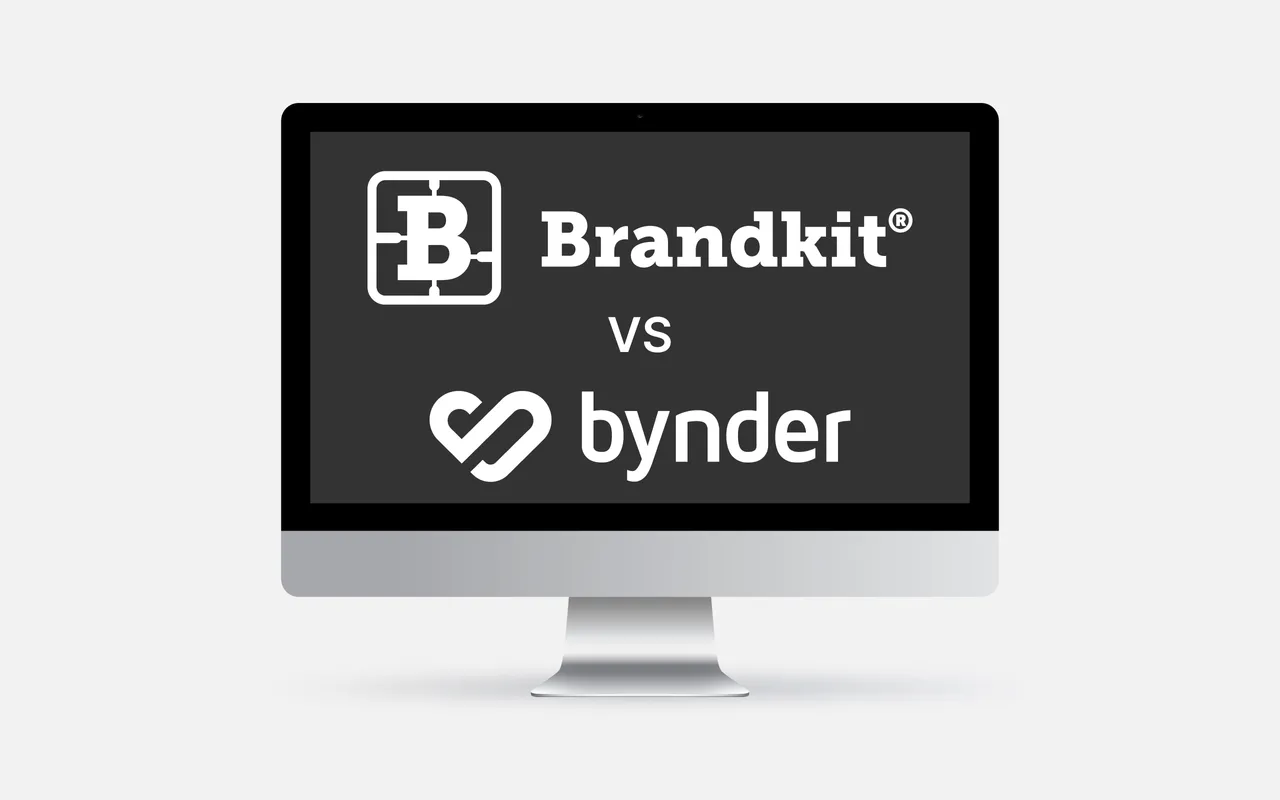
Brandkit vs Bynder
Caveat: I am the founder and CEO of Brandkit and so obviously have a bias in this analysis. That said I asked ChatGPT to help write this article, and have tried to be as fair as possible in my analysis. However while I know Brandkit intimately, I do not have intimate knowledge of Bynder’s product, and this analysis is based on what I can glean from their website, and from feedback I have had from present or past customers of Bynder over several years
In today’s digital age, where the volume of digital content/digital assets is exploding, managing digital assets efficiently has become a paramount concern for brands, especially for those folks in brand management, marketing, and creative roles.
Two notable solutions that have gained traction are Brandkit and Bynder.
Both platforms offer robust features tailored to streamline the organization, access, and distribution of digital assets, but they cater to slightly different needs and preferences.
In this comparative analysis, we’ll delve into how Brandkit and Bynder stack up against each other, helping you make an informed decision based on your organization’s unique requirements.
Brandkit: Empowering Stories with Purpose
Brandkit, with its roots deeply embedded in serving mid to large-sized brands, especially those focusing on place brands, destination marketing organizations, and economic development agencies, is more than just a digital asset management (DAM) system.
It positions itself as a comprehensive Brand Toolkit solution, aiming to help brands engage external users, partners, stakeholders, and journalists as well as internal employees.
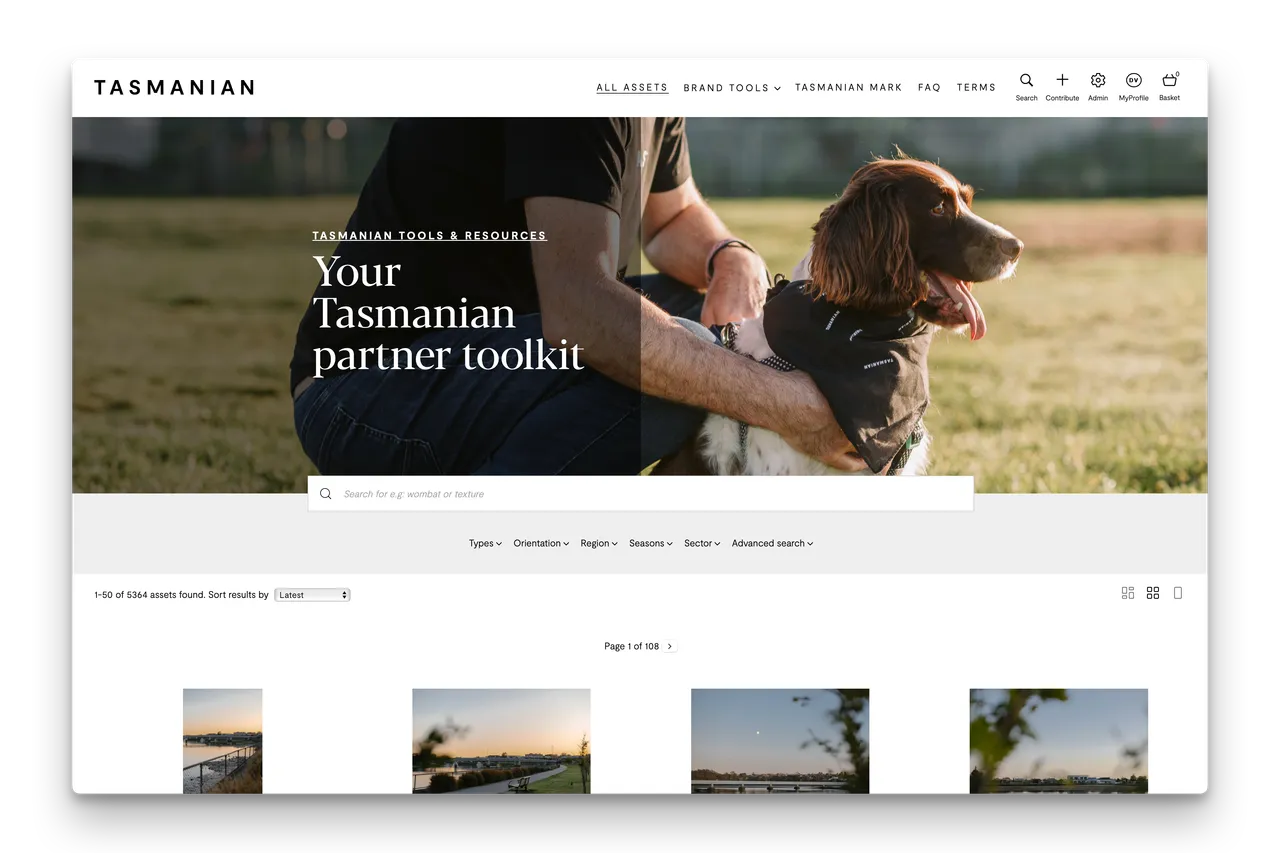
(Customized UI for Brand Tasmania powered by Brandkit)
Brandkit’s emphasis on public facing self-serve brand portals or toolkits plus it’s support for meaningful and honest communication shines through its platform, offering features that facilitate not just the management of digital assets but also, the wider distribution of brand resources, that permit and encourage external users to tell a coherent brand story.
Brandkit is good choice for content distribution - particularly for large collections photography and video.
Key Features:
- Publicly accessible and discoverable . Easily setup public (or private) brand portals and toolkits to serve users outside the organization
- Story-centric toolkit: Tailored for brands that prioritize storytelling through shared content, allowing for a narrative-driven approach to asset organization.
- Intuitive User Interface: Designed for ease of use, ensuring that all users (inside and outside the organization) can efficiently find and utilize assets, in a brand safe way.
- Fully customizable. Brandkit is designed so that every customer can have a unique Brand Portal UI, a custom domain, and plenty of flexible configurations.
- Built in CMS. Brandkit is a hybrid system with both DAM and CMS modules. The CMS is tightly integrated with the DAM allowing intelligent and personalised on-page content.
-
- Brand Identity Guidelines: Ensures brand consistency by providing easy access to brand guidelines, logos, and templates. Brandkit has a unique auto-attachment feature for PDF based Brand Guidelines, and also support digital brand guidelines.
- Advanced Search Capabilities: Facilitates quick access to relevant assets through a powerful multi-faceted searchbox, configurable search navigation, search filters and tags. With configurable taxonomy and AI aided auto-tagging.
- Collaboration Tools: Streamlines workflows by enabling teams to collaborate effectively within the platform, with self-serve, self-register, remote access, configurable users roles, access permissions, automatic licencing and terms of use acceptance, a contribution work flow, content syndication and integration, file transfers and more.
- Integration. Brandkit has a private API that allow integration with hundreds of 3rd party app via middle-ware like Zapier. It also has direct integration with a number of third party services for SSO logins, file ingestion, CRM integration and AI.
- Analytics and Reporting: Brandkit include web analytics integration with Plausible and Google Analytics. Provide it’s own content analytics and various reports. Delivers insights into asset usage and performance, aiding in strategic decision-making.
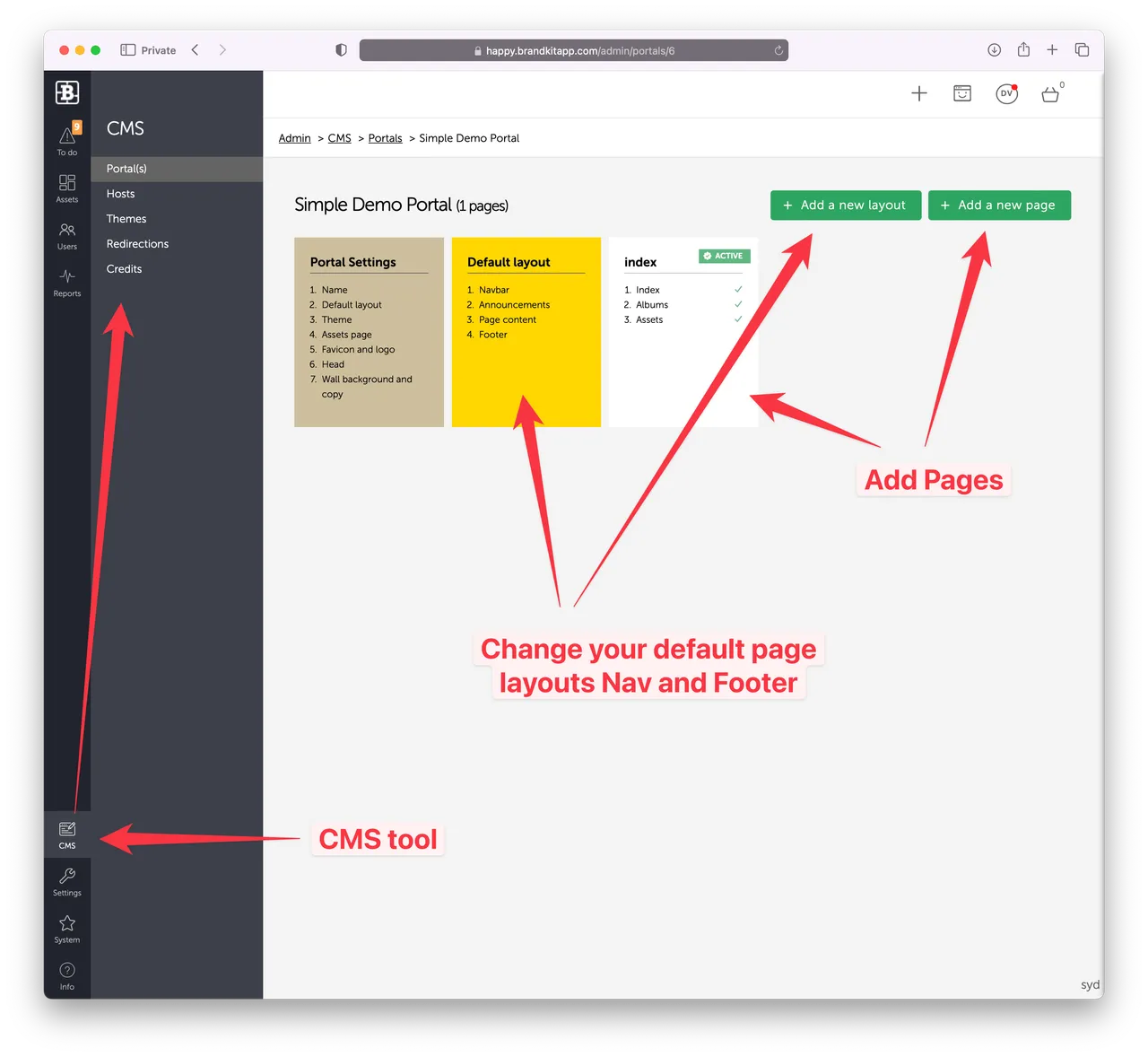
(Brandkit’s built in CMS tool)
Bynder: Streamlining Creativity and Collaboration
Bynder focuses on providing a seamless, collaborative platform for creative teams, marketing departments, and brand managers, at mostly larger enterprises.
It excels in automation and integration capabilities, making it an ideal choice for organizations looking to streamline their internal creative processes and ensure brand consistency across all digital touch-points.
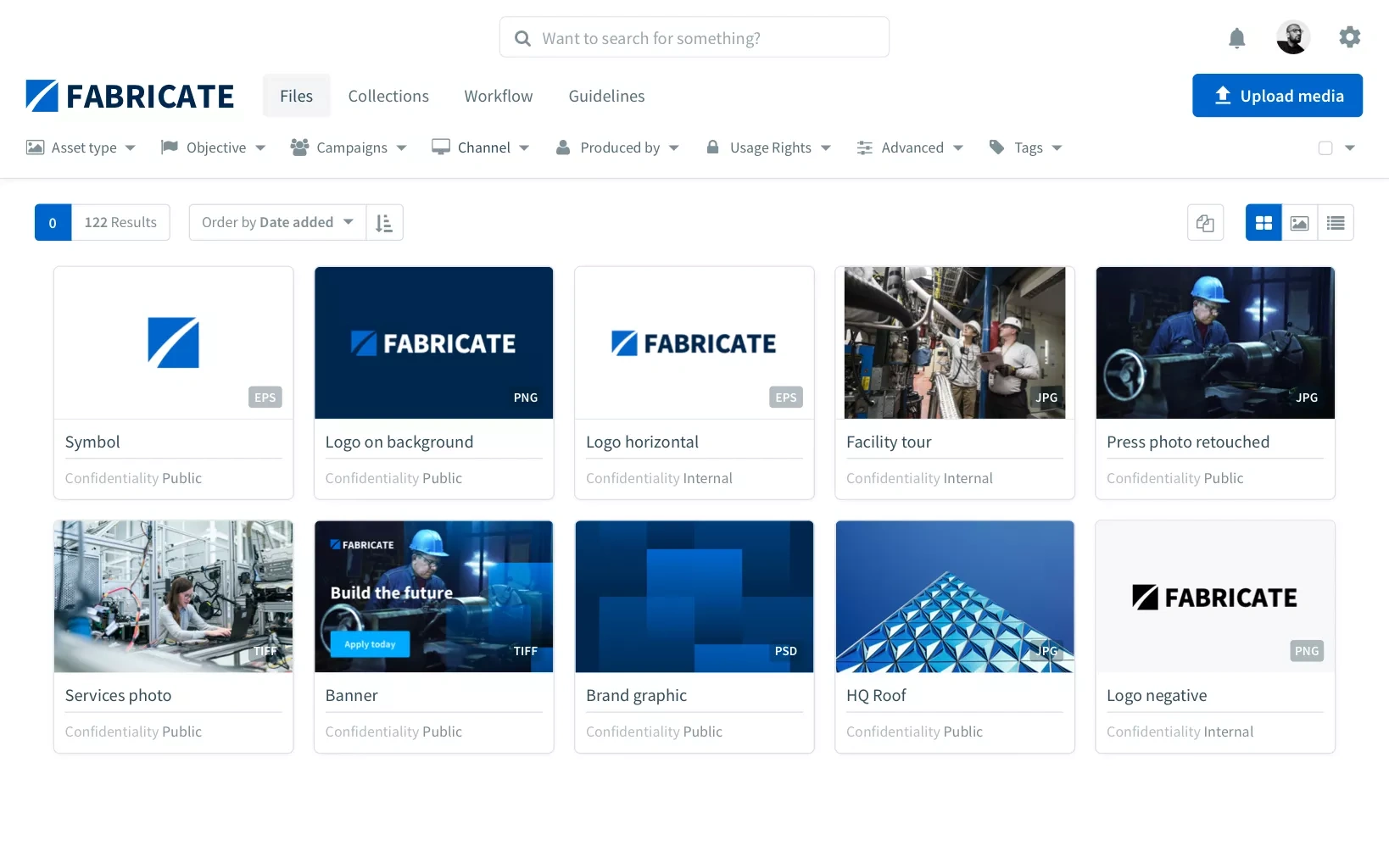
(Bynder’s DAM UI)
Bynder is designed to cater to a wide range of industries, offering flexibility and scalability to meet the evolving needs of businesses.
Bynder a good choice to help manage and automate content (e.g. template based ads) production.
Key Features:
- Creative Project Management: Incorporates project management tools directly within the DAM, facilitating smoother workflows from creation to publication.
- Brand Identity Guidelines: Ensures brand consistency by providing easy access to brand guidelines, logos, and templates. Bynder includes support of digital brand guidelines.
- Integration Ecosystem: Offers extensive integration options with other marketing technology tools, enhancing workflow automation.
- Analytics and Reporting: Delivers insights into asset usage and performance, aiding in strategic decision-making.
- Content Generation: Bynder supports template driven content generation.
- Customizable Approvals: With Bynder you can setup custom approval stages
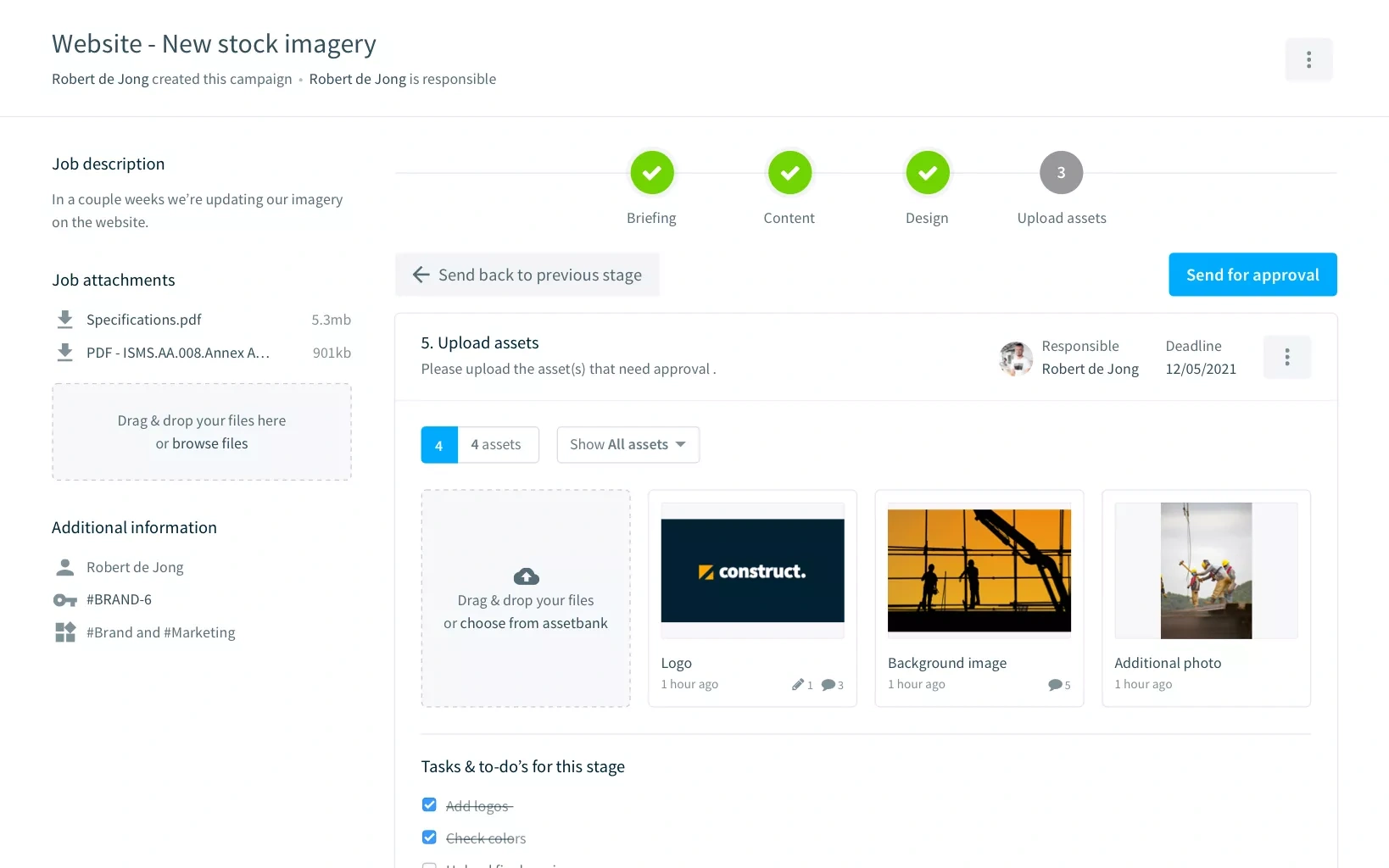
(Bynder’s customizable approval workflows)
Choosing What’s Right for Your Brand
Brandkit is the go-to choice for organizations that view their brand assets as resources to share widely to encourage external users (such as stakeholders, partners and journalists) to tell the brand story using official and approved content. Or for brands that prioritize storytelling and content in their marketing strategy. Its focus on enabling brands to be meaningful guides in an information-rich world makes it especially appealing to place brands and destination marketing organizations that wish to weave compelling stories around their destination or place.
Bynder, on the other hand, suits businesses looking for a high degree of automation and integration within their own creative and marketing processes. Its strong emphasis on content creation, collaboration and brand consistency makes it ideal for larger teams that operate in dynamic environments where speed and cohesion are critical.
Conclusion
Both Brandkit and Bynder offer compelling features for digital asset management, but the choice between them should be guided by your organization’s specific needs, the nature of your brand’s storytelling, and how you envision your workflows.
-
Bynder is a DAM with integrated creation tools, with its robust creative, collaboration tools and integration capabilities, is perfect for teams seeking efficiency and consistency in their branding efforts. There are many DAM solutions (Brandfolder, Webdam, Canto Cumulus, etc). Bynder is one of the best.
-
Brandkit is a Brand Toolkit solution with an integrated DAM and CMS, with its emphasis on meaningful communication and storytelling through shared content and a shared narrative, is well-suited for brands that want to arm their employees, partners, stakeholders and the media with content, so each can to tell their stories, using official and approved brand content. Brandkit is a bit of a unique solution, it has industrial strength DAM and a tightly integrated CMS built-in, but it’s focus on customizable public facing self-serve toolkits, sets it apart.
Ultimately, the decision comes down to aligning the platform’s capabilities with your strategic objectives, ensuring that your chosen solution not only manages digital assets effectively but also enhances your brand’s narrative and operational efficiency.
Brandkit vs Bynder
Both Brandkit and Bynder offer compelling features for digital asset management, but the choice between them should be guided by your specific needs. Learn more.
